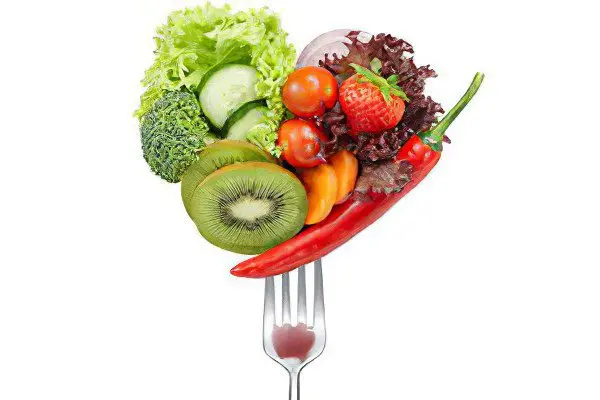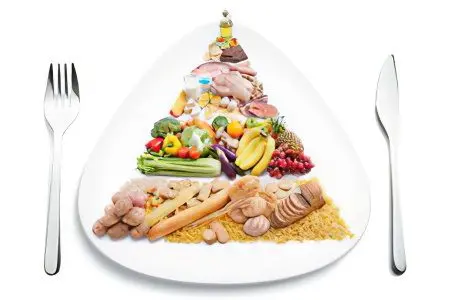Contents

Hypertension is considered one of the most common diseases today. High blood pressure affects not only the elderly, but also young people. Overweight patients are at particular risk. Extra pounds create an additional burden on the body and are one of the causes of unstable pressure. Therefore, to cope with hypertension, drug treatment is not enough. It is important to reduce weight to the recommended level and adhere to certain rules in food.
The most effective nutrition system developed by American scientists is the DASH diet. It is suitable not only for patients with hypertension, but also for those who want to lose weight. The DASH diet is based on the frequent use of small portions, that is, on fractional meals. Thanks to this, it is possible to avoid severe restrictions. A balanced diet in accordance with the DASH diet helps to correct the lipid profile, lower blood cholesterol levels, and also prevent high blood pressure. Patients who adhere to this nutrition system are less prone to coronary heart disease, the formation of malignant tumors, strokes and diabetes. Paying attention to the DASH diet is also for relatively healthy people who want to lose weight and monitor the state of their body.
Basic Nutrition Principles for the DASH Diet
The main goal of the DASH diet – maintaining a normal level of blood pressure, which is achieved by weight loss and its control. It is not difficult to adhere to the principles of this nutrition system: it is enough to give preference to natural products, avoid fatty and sweet foods.
Of particular importance is the reduction of salt intake. Its maximum allowable volume per day is half a teaspoon. This should take into account both the salt contained in the products and added to the finished dishes. It should be reduced gradually.
The DASH diet allows for at least 6 servings of whole grains per day. It can be various cereals, pasta from durum wheat. However, portions should be small. For example, half a glass of porridge or boiled pasta. White bread should be replaced with whole grains, and at one meal eat no more than 40 g.
Vegetables and fruits are a source of vitamins and fast carbohydrates. They can be consumed 4-5 servings per day. At one meal, it is recommended to eat no more than one glass of green vegetables or one whole fruit. For all other vegetables, the portion should be halved. The use of juices and dried fruits should also be limited.
In a balanced diet, there should be a sufficient amount of protein, which is necessary for the formation of new cells and body tissues. In addition, it performs a number of other important functions. The source of protein in the DASH diet can be any lean meat or fish, as well as chicken eggs. The total weight of these servings per day should be no more than 200 g. Dairy products are also a source of protein. It can be milk, cottage cheese, kefir, natural yogurt or low-fat cheese. A portion of a liquid dairy product should not exceed 150 ml. Cheese consumption should be limited to 50 grams per day.
Along with proteins and carbohydrates, fats are an important part of a balanced diet. They enter the body with fish or meat. Patients on the DASH diet can indulge in a daily spoonful of vegetable or olive oil to dress a salad, or a sandwich with a thin layer of butter for breakfast.
It is helpful to include oily sea fish in the DASH diet, as well as fish oil in liquid form or in capsules. This will help you lower your blood pressure and reduce the risk of dangerous complications of hypertension (find out more in the article: Benefits of omega-3s).
For many, the biggest problem is the need to give up sweets. As part of the DASH diet, you can consume such foods, but not more than 5 servings per week. Moreover, they should be small: a few tablespoons of jam, jam or honey, a piece of dark chocolate. Gradually, the body will get used to a limited amount of sweets, and it will become easier to cope with the temptation. It is worth looking for an alternative to prohibited products. For example, replace sweets and cookies with dried fruits, natural jam, berries.
You should drink no more than 2 liters of liquid per day, this volume includes both clean water and other drinks. It is recommended to give up alcohol, but in some cases 1 serving per week is allowed: a glass of vodka, a glass of wine or a mug of beer.
The average daily calorie intake is 2000 kcal. As a rule, this amount of energy is enough not to feel hungry and get all the necessary elements and vitamins from food. Depending on lifestyle, weight, height and health, the daily calorie content may vary, so it is worth consulting with your doctor on this issue. The DASH diet allows you to achieve good results in weight loss, provided that all of its rules are followed. However, this will take a long period of time.
Recommended Foods on the DASH Diet

The daily diet of the DASH diet includes the following foods:
7-8 servings of bread and cereal products;
4-5 servings of vegetables;
4-5 servings of fruit;
2-3 servings of low-fat or low-fat dairy products;
2 or fewer servings of meat or fish products;
2,5 servings of fat;
4-5 servings of nuts, seeds, or legumes
5 servings of sweets per week, including 1 tablespoon of sugar, 1 tablespoon of jelly or jam, 15 grams of gummies, or a glass of lemonade.
Here are the approximate “sizes” of what we mean by one serving.
For bakery and grain products:
1 piece of bread;
Half a large hot dog or hamburger bun;
6 cm bagel;
1 small bun or cake (about 30 g);
30 g of cereal flakes, ready to eat, preferably unsweetened;
2-3 pcs. large crackers or 5-6 small ones;
Pita (10 centimeters in size, rye or wheat);
3 medium loaves, each about 12 centimeters long;
9 biscuit cookies;
1/2 cup cooked porridge, rice or pasta
2 dry salted breadsticks;
1/5 of a 250-gram biscuit;
1/16 of a two-layer cake;
3 rice or corn cakes;
2 cups “popcorn” (popcorn).
Attention: a cup is about 200-240 ml
Serving of fruits on the DASH diet:
One whole fruit (banana, orange, peach, apple, or medium-sized pear)
Half a grapefruit;
Melon slice;
Fruit juice – 3/4 cup
Tangerine or orange slices, no more than 1/2 cup in volume;
1/2 cup any fresh fruit, cut into pieces
1/2 cup canned fruit in own juice
Frozen fruits – 1/2 cup;
1/4 cup dried fruits, which are considered more concentrated in terms of nutrient content;
5 large or 7 medium-sized strawberries;
1/2 cup raspberries, blueberries, blackberries, or blackcurrants
11 cherry;
12 grapes;
1,5 plums of medium size;
2 apricots of medium size;
1/8 of a medium-sized avocado (but be aware that it is quite high in fat!);
1/2 cup fruit salad (made without sugar or cream)
1/2 medium mango;
1/4 medium papaya;
1 kiwi fruit;
2 canned apricots (no syrup);
14 pieces of canned cherries (without syrup);
1,5 canned peaches (without liquid).
1 canned pear (without syrup);
2,5 canned pineapple wedges (no syrup)
3 canned plums (no syrup)
9 dried apricot halves (dried apricots);
5 pieces of prunes.
For vegetables:
1/2 cup vegetables, cooked or chopped raw
1 cup leafy greens like lettuce or spinach, or 1 cup green vegetable salad
1 medium-sized tomato or 2-3 small tomatoes;
7-8 pieces of young carrots or celery (about 6 cm long);
3 broccoli florets or 1/3 medium sized cucumber
10 green onion feathers of medium length;
13 medium sized radishes;
9 pods of snow or sugar green peas;
6 slices of summer squash (yellow or zucchini);
1/2 cup slaw or boiled potato salad
1/2 cup boiled leafy vegetables like kale or spinach
1 whole medium green or red bell pepper or 8 pepper rings
1 artichoke;
6 shoots of asparagus;
2 small whole beets, about 5 cm in diameter;
4 medium sized Brussels sprouts
1 medium sized corn cob;
7 medium sized mushrooms;
1 whole medium-sized onion or 6 small onions;
1 whole medium-sized turnip;
10 sticks of french fries (deep-fried);
1 medium sized baked potato;
3/4 cup sweet potato;
1/2 cup spaghetti tomato sauce
1/4 cup tomato paste;
1/2 cup boiled beans (unless counted as a meat dish)
3/4 cup vegetable juice;
1 cup of pea soup;
1 cup vegetable soup
Meat and Protein in the DASH Diet – no more than 2 servings per day. One serving may include:
55-85 g boiled lean beef, veal, lamb or lean pork (boneless);
55-85 g of boiled poultry meat, preferably chicken or turkey (without skin and bones);
55-85 g boiled fish (without bones). It is allowed and even recommended to strengthen the heart the use of fatty varieties of sea fish or fish oil preparations;
55-85 g of canned fish without sauce;
1 whole egg (yolk and white) or 2 egg whites;
1/4 cup sunflower or pumpkin seeds
1/3 cup nuts: walnuts or peanuts
1/2 cup baked beans;
1/2 cup soy cheese tofu;
Xnumx lean ham;
1-1,5 sausages (total weight – about 70 g);
6 medium sized shrimp;
1/4 cup canned lobster or shrimp (no sauce)
4 Pacific oysters or 11 Atlantic;
1/4 cup canned salmon (no sauce)
1/3 cup canned clams or crab meat (no sauce)
For dairy products:
1 cup milk or buttermilk;
1 cup of kefir, yogurt, acidophilus or any other fermented milk product;
45-50 g of hard cheese;
55 g of processed cheese;
2 cups pressed cottage cheese (it has less calcium than hard cheese);
1/2 cup skimmed milk powder;
1/2 cup sweetened condensed milk
1 cup frozen yogurt or 1,5 cups frozen milk
Recipes

baked cod
The DASH diet requires you to eat at least 2 servings of foods per day that contain enough protein. They are rich in fish, and even its fatty varieties are allowed. For baking, you can take cod or trout. The fish fillet should be washed, brushed with olive oil and rubbed with spices, and then cooked in an oven preheated to 180 ° C in foil. The size of one serving is 80 g. Fatty fish in this case will become a source of not only protein, but also healthy fats.
Salad “Spring”
This dish is easy to prepare, but has an original taste and contains foods rich in vitamins and nutrients. To prepare the salad, chop a green apple and lettuce, add some walnuts, sunflower seeds and cranberries to them, and then season with olive oil.
Salad “Meat”
In this salad, along with vegetables, there is chicken meat, which makes it quite satisfying. Cut the boiled chicken fillet and celery, sprinkle with lemon juice, add spices and green onions, and then season with olive oil or low-fat sour cream.









